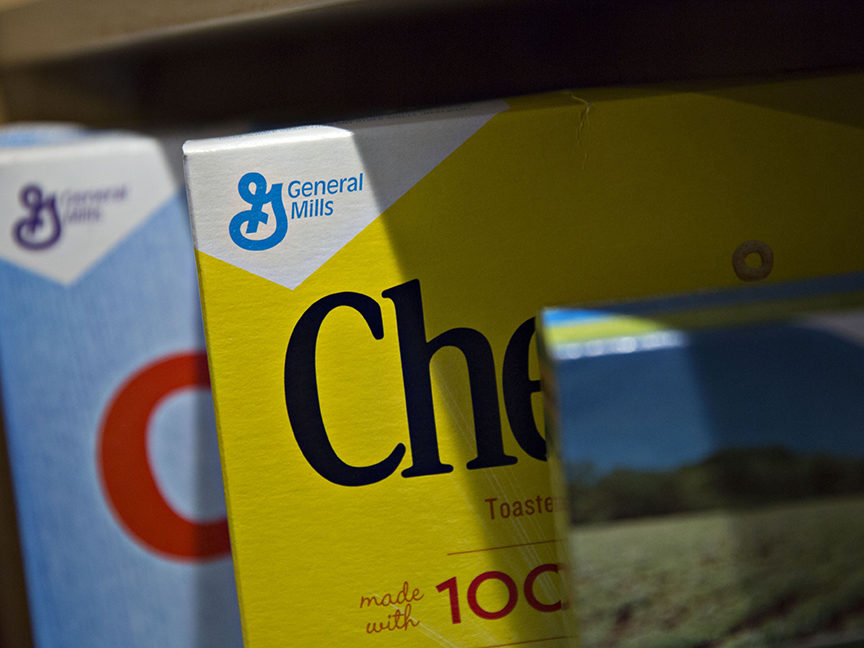
In recent trips to the grocery store, consumers might have noticed that package sizes are shrinking while prices remain the same, or in some cases increase. This phenomenon isn’t in their imaginations — it’s real, and is being referred to by some experts as “shrinkflation.”
Many of consumers’ favorite brands are taking part in the practice. Mondelez International recently reduced the size of Oreo cookie packs by nearly 10%, from 303 to 270 grams. More obviously, Quaker Oats Co. took a whole bar out of boxes of its chewy granola bars, so now you get five instead of six. Lay’s chips, General Mills, Nutella, and Tropicana are among the major brands also participating in the shrinkflation trend.
Shrinkflation is happening because of three major factors. First, the cost of raw materials is rising, due in part to fires and droughts in North America and Russia, flooding in Europe, and fire and frost in Brazil, all among the biggest food-producing areas of the world. Second, higher fuel prices and supply chain backlogs are increasing transportation cost. And lastly, increased labor costs are the result of workers realizing that they have a lot more bargaining power post-pandemic.
When there’s a change in the cost to manufacture an item, food brands have four choices. First, they can do nothing and eat the cost — something no manufacturer wants to do. Second, they can change ingredients, requiring reformulation of the product, negotiation with new ingredient suppliers, and even re-tooling of production facilities. Third, they can raise prices, a move that’s generally noticeable to consumers, who might reach for a competitor’s product instead. And fourth, they can engage in “shrinkflation,” an option that’s likely to be less visible to consumers. That said, the trend is becoming so widespread and abrupt that 75% of consumers say they have noticed shrinkflation happening.
The shrinkflation that shoppers are seeing in grocery store aisles is part of a bigger trend of rising food prices that are projected to cost the average family of four up to $700 per year, the largest increase we’ve ever seen. This has led to changes in consumer behavior. According to a recent study from Dalhousie, two out of five Canadians say they’ve changed their behavior to save on food — for example, buying less meat or shifting to private-label products.
What can we expect from grocers in response to shrinkflation? Smart grocers will want to show up on the side of consumers, by finding new ways of helping them out. According to recent data, almost half of grocery consumers think grocers don’t make it easy to save money. That presents a challenge but also an opportunity.
Savvy grocers are planning to help consumers navigate this issue in four major ways:
- They’re going to start promoting private-label alternatives to the national brands. These are typically products with similar ingredients but at a lower price, because you’re not paying the “brand” premium.
- They’re increasing promotion of what’s being called “enjoy tonight” products, which are discounted as they approach their “best before” dates. This move is part of a broader food rescue and zero-waste trend that’s just beginning to take hold.
- They’re partnering with apps to help save consumers money, turning to coupon aggregators like Flipp and RetailMeNot as well as “enjoy-tonight” apps like FlashFood.
- They’re leaning into being transparent. That may seem counterintuitive, but the most important thing for grocers is that customers keep shopping with them. The specific brand of orange juice they buy while in the store isn’t as important. If grocers don’t want to risk consumers seeing them as complicit in this sneaky shrinkflation, they should embrace transparency — for example, showing the unit price on labels, not just the total price.
It’s unclear how long shrinkflation will be with us, but its impact on grocery consumers is already being acutely felt. Grocers have an important role to play in helping to alleviate the stress that shoppers are experiencing, by embracing consumer-centric and outside-the-box strategies.
Stefan Read is senior vice president of engagement advisory and strategy practice lead with Jackman.







